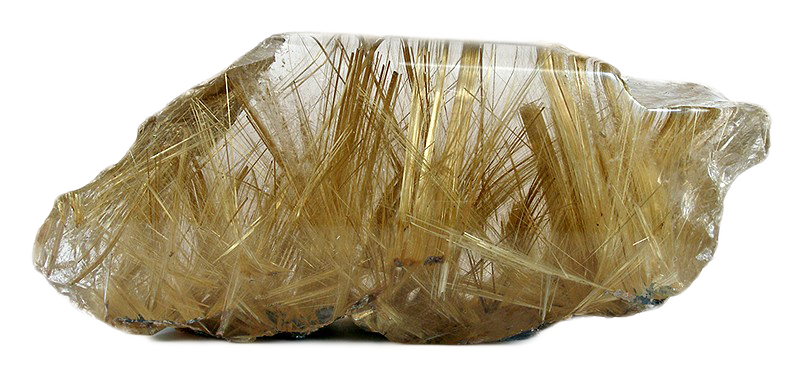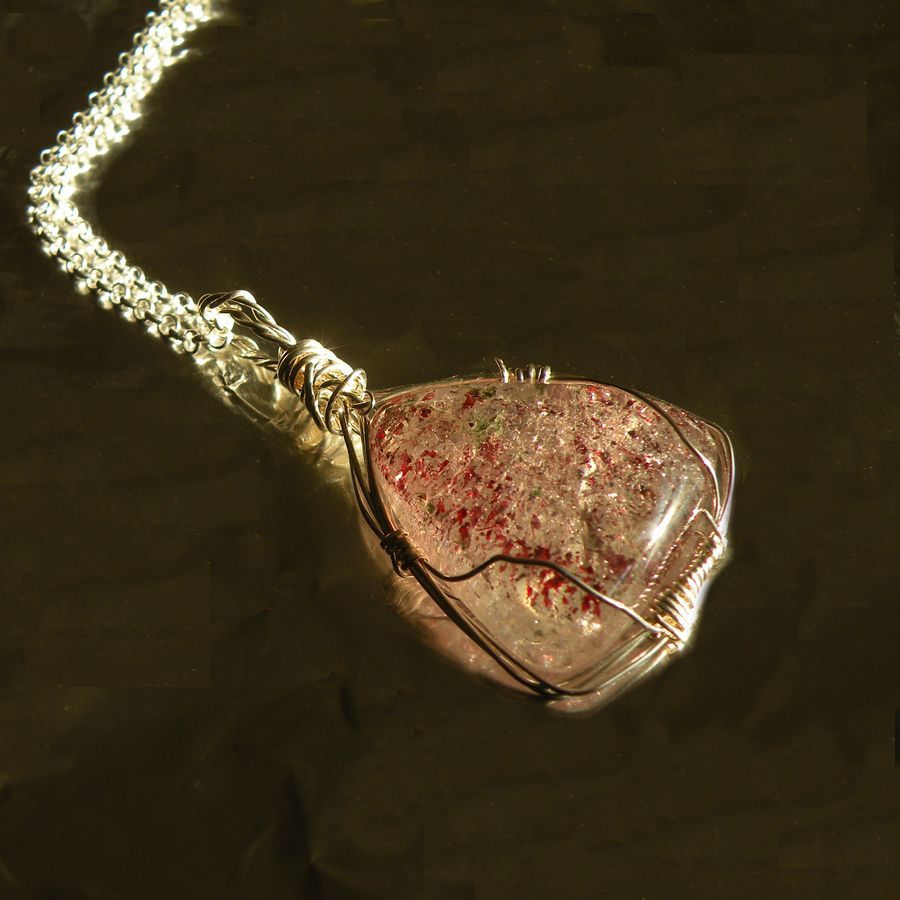

Stuff In Quartz
Quartz is among the most common minerals in the Earth's crust - about 12%. Read More

The elegant clear quartz of this stone has enveloped small seed-like inclusions of strawberry red and pink hematite . . .
More ...
Quartz is also very hard stuff - 7 on the Mohs hardness scale * (where only diamond rates a 10). Normally trace elements in a stone are what produces the stone's body color.
Amethyst, for example, is purple quartz, colored by iron. Under certain conditions though - heat, pressure, other minerals around it - any number of minerals can be included in otherwise clear quartz or light-colored quartz. This happens so frequently that a whole category of gemstones is informally referred to as "stuff in quartz".
While inclusions in gemstones are usually a negative, this is often untrue with quartz. While you want a flawless diamond (if you can get it), you may just fall in love with the uniqueness and patterns of the "stuff" found in quartzes. No "stuff-in-quartz" stone looks precisely like any other on Earth. Rather like snowflakes in that respect. Designers love them because each is unique. Wearers and collectors love them for that reason as well, but also because many stones in the category are affordable and just plain striking. In some, you can imagine pictures or plants.
Common "stuff-in-quartz" stones have inclusions of (relatively) softer rutile (Mohs scale 6), while tourmilinated quartz can be striking with black needles of schorl (black tourmaline) running through an otherwise clear stone. Less common but still fairly easy to find on the market are dendritic quartz, pyrite ("fools' gold") in quartz or even bits of brighter, contrasting colors - strawberry reds, medusa blues and others.
Some stuff-in-quartz stones are even stranger. They have inclusions of "negative crystals" - spaces where there once was a crystal of something, but the crystal itself never grew properly, merged into the stone, evaporated or otherwise disappeared. What you see is the shape of the included "crystal", but the shape is empty - a bit of "shaped nothing" inside the stone.
Most stuff-in-quartz stones are cut as cabochons, made to show the inclusions in their best light. Given this, you probably want as much light as possible to have access to the stone. Rather than setting yours in a closed backing then, consider "framing" the stone or having it set higher above the rest of your piece so that it can get light from all around it.
I can almost guarantee that the more you look at the stuff-in-quartz piece that caught your eye, the more you will grow to see and enjoy its uniqueness. Have fun looking! Or buying...
* The Mohs scale of mineral hardness characterizes the scratch resistance of various minerals through the ability of a harder material to scratch a softer material. It was created in 1812 by the German mineralogist Friedrich Mohs. http://en.wikipedia.org/wiki/Mohs_scale_of_mineral_hardness
© 2016 Simple Elegance LLC
web development by turbocatalyst